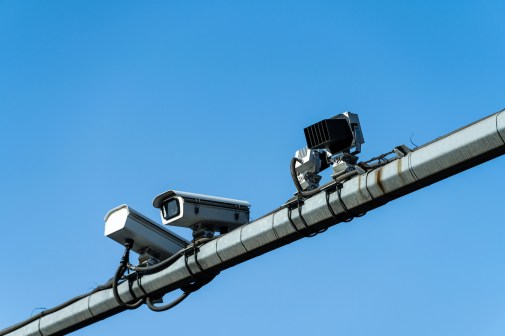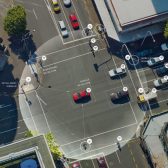A tiny tweak to Chicago’s red light camera policy is expected to reduce revenue by $17 million

A fraction-of-a-second tweak can save lives or cost a city millions in revenue.
Following the recommendations of an independent academic report, the Chicago Department of Transportation (CDOT) announced Monday the city will extend the grace period of its red light cameras from 0.1 to 0.3 seconds. The change will reduce the number of tickets issued annually by 29 percent and cost the city $17 million, the Chicago Tribune reported. For decades, cities like Chicago have been evaluating and tweaking how minor changes like these can improve safety conditions.
The change in Chicago was instituted to help drivers with the “dilemma zone,” a short window in which the light changes from green to yellow and the driver is unsure whether he should speed ahead or stop for the impending red light.
“We want to emphasize that extending this enforcement threshold is not an invitation to drivers to try to beat the red light,” Chicago Department of Transportation (CDOT) Commissioner Rebekah Scheinfeld said in a press release. “By accepting the recommendation of the academic team, we are giving the benefit of the doubt to well-intentioned drivers while remaining focused on the most reckless behaviors.”
The city noted that the red light grace-period extension makes the city more forgiving than many around the country and on-par with cities like New York City and Philadelphia. New York City officials confirmed to StateScoop that their grace period is also 0.3 seconds and has been since a 1994 traffic light program.
Standards set by the Federal Highway Administration’s Manual on Uniform Traffic Control Devices provide cities a starting template for establishing such roadway infrastructure decisions, but studies like the one commissioned by CDOT are sought by cities looking to hone operations and invariably drive their departments’ directive of improved safety.
Chicago’s $300,000, 104-page study, conducted by the Northwestern University Transportation Center (NUTC), offered several other recommendations to improve safety that the city will follow, including the elimination of red light cameras at six intersections. The cameras being removed were deemed not to offer any safety benefit, according to the report.
Evaluation criteria provided by the report — traffic volume, geometrics of the intersection, evidence of a high number of angle and turning crashes, and low number of rear-end crashes — allowed the city also to identify five new intersections where red light cameras will be installed.
The study also found a 14 percent increase in rear-end crashes, though researchers noted that the extended grace period should reduce this figure.
Chicago has the largest network of red light cameras in the country with 306 cameras at 151 intersections. In 2012, an investigation by the Tribune found camera operator Redflex had been bribing transit officials, which led to the federal indictment of the vendor’s former CEO and several government officials.
Since 2011, the city has reduced the number of red light cameras by 20 percent — 78 cameras — based on crash location data.
In 2013, the city installed new speed cameras and excused more than 230,000 tickets worth $13.8 million dollars during a 45-day grace period. As with the recent news, the city officials noted then that the purpose of the cameras was not to raise funds for the city, but improve safety.






